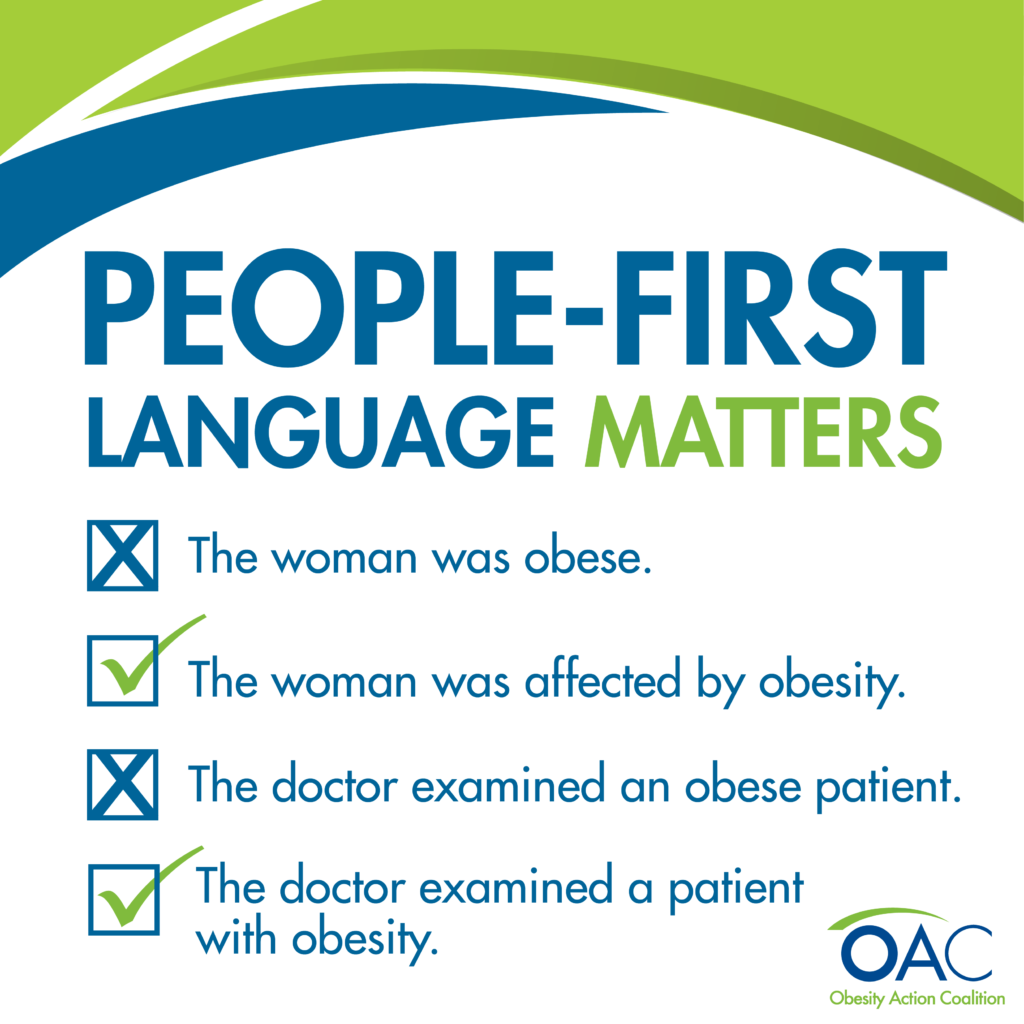We’ve all heard and likely used the idiom: “A picture is worth a thousand words.” The notion behind this phrase is the idea that complex ideas can be more easily conveyed by an image rather than a description. But what happens when the image is mis-representative of the idea?
Weight Bias: Imagery
 This is often the case when it comes to the portrayal of obesity in the media — from blogs to national news stories in print and on television. Even stories that do a good job addressing obesity-related issues, like access to care and advances in obesity treatment, can fall woefully short when they choose stigmatizing images that continue to enforce negative stereotypes. These are images that show people of heavier weights in ill-fitting clothes, often downing large quantities of unhealthy food, in disarray, and also often without heads. This is as if to say someone with obesity shouldn’t really be seen as a whole person.
This is often the case when it comes to the portrayal of obesity in the media — from blogs to national news stories in print and on television. Even stories that do a good job addressing obesity-related issues, like access to care and advances in obesity treatment, can fall woefully short when they choose stigmatizing images that continue to enforce negative stereotypes. These are images that show people of heavier weights in ill-fitting clothes, often downing large quantities of unhealthy food, in disarray, and also often without heads. This is as if to say someone with obesity shouldn’t really be seen as a whole person.
Weight Bias: Language
 And what about the words in these stories? Obesity is a disease, and a disease is something someone has. It’s not who they are. The difference between these two is as simple as stating, “This person has obesity” vs “This person is obese.” Using the former is what’s known as People-First Language (PFL). PFL is not new. It’s an idea that has been around for decades and aims to avoid dehumanizing someone based on a disability, medical condition or even socio-economic condition.
And what about the words in these stories? Obesity is a disease, and a disease is something someone has. It’s not who they are. The difference between these two is as simple as stating, “This person has obesity” vs “This person is obese.” Using the former is what’s known as People-First Language (PFL). PFL is not new. It’s an idea that has been around for decades and aims to avoid dehumanizing someone based on a disability, medical condition or even socio-economic condition.
PFL is about putting the person first because their disability, condition or status is simply a secondary attribute. It is not characteristic of their identity.
It can be tough to practice PFL. Doing so can be repetitive and awkward to both read and write, which may explain why the media fails to meet the most basic standards so often. But failing to even try only perpetuates negative stereotypes, which further stigmatizes people who have obesity. We do see more and more of those in the media stepping up and striving to use PFL. However, these continue to be exceptions and not the rule.
How You Can Help:
More can be done, and we can help! The OAC has a number of great resources available to the media and the general public. In the case of stigmatizing images, we have an Image Gallery that offers respectful alternatives. And for the words that go with those images, we have Media Guidelines for the portrayal of people with obesity.
Please take #OACAction by making use of these resources in your own blogs, social media posts, etc. And when you come across images or articles you feel don’t adhere to the concept of PFL, leave comments and other feedback for authors and publishers – respectfully asking them to review what resources the OAC has available.
Post Written by Rob Portinga, OAC National Board Member
